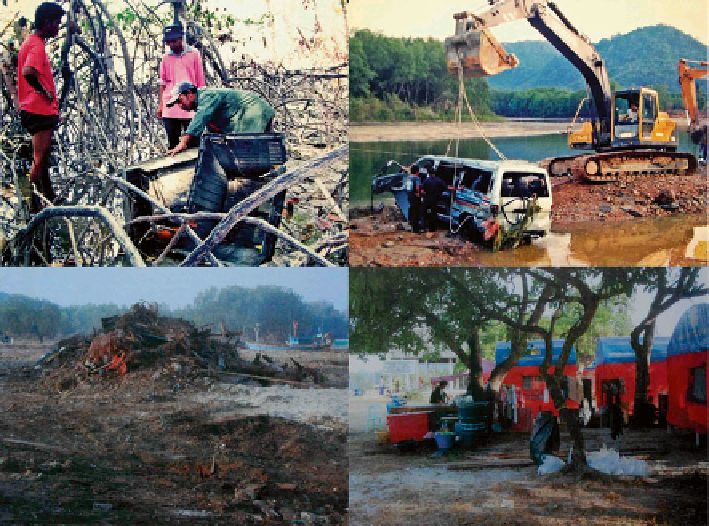Environmental Engineering Reference
In-Depth Information
6.5
Immediate Relief and Recovery
After the incident, Kasetsart University repaired parts of the buildings that have been
partially damaged and converted them to temporary offi ces. For the affected people
in both villages, the residents either lived with their relatives that were not affected
by the tsunami or stayed in the refuge center that was adapted from the child devel-
opment center. The others stayed temporarily in the Ban Kamphuan School nearby
while waiting for the temporary shelters being built, which took about 2 months. In
addition, the World Vision Foundation of Thailand built additional temporary shel-
ters in the previous sport fi eld in the Hat Sai Khao village. The Royal Thai Air Force
also built temporary shelters in the empty land nearby. Many supplies such as food,
drinking water and clothes were provided to the victims during the recovery period.
For the clean up process (Fig.
6.5
), the debris at the Andaman Coastal Research
Station for Development were cleaned up by the employees who took about
2 months to complete the tasks. In Nua village, the affected residents were paid
daily (about $6 per day, a typical daily wage in Ranong province during that time)
by the World Vision Foundation of Thailand to help clean up debris in the village.
Fig. 6.5
The clean up process in the affected areas.
Top left
: a large television was picked up in the
mangrove forest.
Top right
: the backhoe lifted the fl ooded van at the Kamphuan canal.
Lower left
:
a pile of cleaned up debris were waiting for removal at the back of the Andaman Coastal Research
Station for Development along the Kamphuan canal.
Lower right
: temporary shelters provided by
the Royal Thai Air Force (Source: Images by ACRSD, the Recovery and Development Committee

Search WWH ::

Custom Search